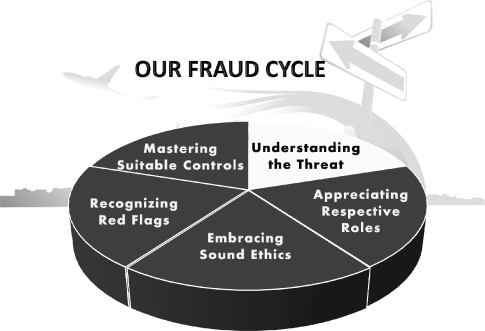2
A Wide Range of Threats
Fraud is not like other risks, as it tends to represent a direct threat to an organization rather than a potential opportunity. Having said that, there is a slight argument that some commonplace frauds, say online fraud or overseas bribes, may be seen as opportunities to gain an edge by allowing an astute company to boast about its safeguards in contrast to the competition.
As we say in Chapter 1, this book is based around the Fraud Smart cycle that covers five key aspects of helping non-specialists get to grips with fraud at work. This is repeated in Figure 2.1.
Figure 2.1 The Fraud Smart cycle.

This chapter sits within the first part of the Fraud Smart cycle, Understanding the Threat, and covers some of the better-known frauds that affect most organizations.
WHAT CAN GO WRONG?
The problem with fraud is that it may not be seen as a real threat. There are several reasons for this. The organization may feel that it is something that happens to other entities, not itself, and some frauds, particularly low-level abuse, are pretty much concealed, in that management does not know they are happening. So the true extent of fraud and the damage it can cause may not be properly acknowledged by senior managers and work teams, who just want to get ahead and not have to worry about too many cumbersome controls. However, if the threat of fraud is not fully appreciated, ...

